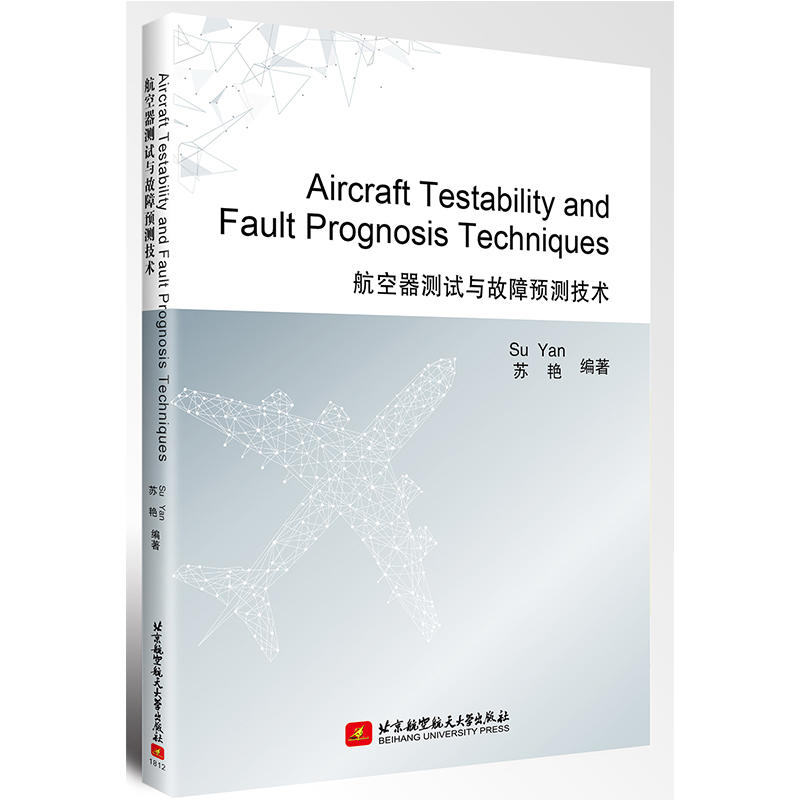
航空器测试与故障预测技术 AIRCRAFT TESTABILITY AND FAULT PROGNOSIS TECHNI

- ISBN:9787512428102
- 装帧:一般胶版纸
- 册数:暂无
- 重量:暂无
- 开本:其他
- 页数:290
- 出版时间:2018-12-01
- 条形码:9787512428102 ; 978-7-5124-2810-2
本书特色
In this book, the complete theory systems and frameworks of aircrafttestability and fault prognosis techniques are established.The commontestability design analysis, fault diagnosis and prognosis methods of aircraftare introduced comprehensively. The objects of the book are to stand out thecharacteristics of aviation, to pursue comprehensive and detailed content, andto emphasize the combination of theory and application.
In the aspect of theory, the advanced theories and techniques includingsignal analysis, multisignal modeling, test strategy optimization, sensor placement andsensing strategies,fault diagnosis methods, fault prognosis techniques and soon, which are involved in aircraft testability and fault prognosis, are allintroduced in detail. In this book, aircraft testability and fault prognosistechniques include: testability modeling and analysis for aircraft system faultdiagnosis and prognosis, vibration monitoring and fault diagnosis for aeroengine, trend analysis of aeroengine, andnondestructive testing of aircraft structure. In this book, many diagnosiscases are arranged in order to make theory to combine practice. In this book, the complete theory systems and frameworks of aircraft
testability and fault prognosis techniques are established.The common
testability design analysis, fault diagnosis and prognosis methods of aircraft
are introduced comprehensively. The objects of the book are to stand out the
characteristics of aviation, to pursue comprehensive and detailed content, and
to emphasize the combination of theory and application.
In the aspect of theory, the advanced theories and techniques including
signal analysis, multisignal modeling, test strategy optimization, sensor placement and
sensing strategies,fault diagnosis methods, fault prognosis techniques and so
on, which are involved in aircraft testability and fault prognosis, are all
introduced in detail. In this book, aircraft testability and fault prognosis
techniques include: testability modeling and analysis for aircraft system fault
diagnosis and prognosis, vibration monitoring and fault diagnosis for aeroengine, trend analysis of aeroengine, and
nondestructive testing of aircraft structure. In this book, many diagnosis
cases are arranged in order to make theory to combine practice.
The book can be acted as the teaching material for senior aircraft
maintenance majors, and reference book for postgraduate and technician of this
major and related majors.
内容简介
本书可作为飞机维修专业的教材,并可作为飞机维修及相关专业的研究生和技术人员的参考书。
目录
作者简介
苏艳:主要从事故障测试与维修排故、系统测试性设计分析、飞机结构适航测试等研究。
-

当代中国政府与政治(新编21世纪公共管理系列教材)
¥33.6¥48.0 -

落洼物语
¥8.7¥28.0 -

中国当代文学名篇选读
¥19.1¥53.0 -

中医基础理论
¥50.7¥59.0 -

北大人文课(平装)
¥13.9¥45.0 -

外国教育史-第2版
¥24.4¥40.0 -

宪法-第二版
¥12.2¥29.0 -

当代中国政府与政治 第二版
¥57.8¥68.0 -

EPLAN电气设计
¥29.9¥39.8 -

闯进数学世界――探秘历史名题
¥21.3¥32.8 -

企业法务教程
¥34.8¥49.0 -

习近平新时代中国特色社会主义思想概论
¥18.2¥26.0 -

金融学
¥29.9¥49.0 -

计算机操作系统教程(第4版)(清华大学计算机系列教材)
¥31.9¥49.0 -

三国史
¥27.5¥50.0 -

飞机总体设计
¥46.8¥78.0 -

古代汉语(第四册)
¥16.1¥35.0 -

编辑审稿实务教程
¥35.1¥45.0 -

管理学:原理与方法(第7版)(博学.大学管理类)/周三多
¥30.9¥49.0 -

(平装)北大必修课:北大口才课
¥12.2¥45.0












